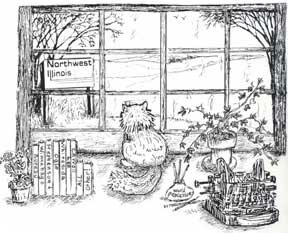
Discover rewarding casino experiences. 
|
The mints have been studied and experimented with more than any other plant according to reference. For centuries mints have been part of folk use and medicines themselves. And why the plant is part of so many “cures.” Some contradict the other. We can guess how many centuries it’s been studied by knowing that the Greek nymph, Menthe, was transformed into a plant, mint, by Persephone, because the nymph had an eye on Pluto. That was ‘way back when.
Mints were grown and experimented with in monasteries a la Brother Cadfael, in apothecaries, by the neighborhood “witch” who sometimes had to work under cover of silence, and night time delivery to make some actual “medicine.” Many of the mints found here were brought from Europe and fit right into the landscape where they thrived usually in damp or swampy places, roadsides, timbers and prairie ravines. They are discovered all across the country in a wide swath, upwards from the bottom tip of Illinois and westward. Mints are versatile as well as varietal. Nearly every tribe of Native Americans used mints in every way ... Cheyennes, Ponca, Lakota, Omaha, Pawnee and so forth for such things hair oil, flavoring beverages, to strengthen the heart and other vital organs, soothe nervous tension, as a deodorant for the body and the household, as well, and after chewing, the wad could be laid on certain parts of the body to improve the “love life.” Some mints have their specialties such as peppermint and spearmint flavoring teas and candies and, of course, catnip, or as they say in Britain, catmint. John Gerard in his tome, “Great Herbalist,” wrote “Cats are much delighted with the smell of catmint that is so pleasant unto them that they rub themselves on it and wallow and tumble in it and also feed on the mint greedily.” Why this is so is not known but catnip is not confined to just kitty cats; ALL felines are intoxicated with it ... From tigers and lions and bobcats, oh, my. There are other plants also that felines become almost passionate with, one of those being Valerian. In the early 1600’s William Topsell wrote Four Footed Beasts in which he said, “The root of the plant Valerian is very like to the eye of the cat and wheresoever it groweth if cats come thereunto, they dig it up for the love thereof as I myself have seen in mine own garden for it smelleth like a cat moreover. Mr. Topsell was speaking wrong. It doesn’t actually smelleth like a cat. It stinks. And it has a sedating effect on all mammals. There are other feline-stimulating plants such as Pennyroyals. It is an insect repellent as well ... A collar of it around a cat or dog’s neck will help them enjoy a bug-free lifestyle. Wild thyme isn’t a report of a garden orgy but a plant like catnip and Pennyroyal that stimulates the feline and is also a mint. In “olden days” it had the nickname cat thyme or the more common, Catmint. There were lots of stories that were mint-related, many moralistic, some ad lib, others specifically planned out to become legend. One pretty little tale said that fairy flirted amongst the Wild Thyme and if your brewed a cup of tea from it, it actually allowed you to see the fairies. It’s true!
|







